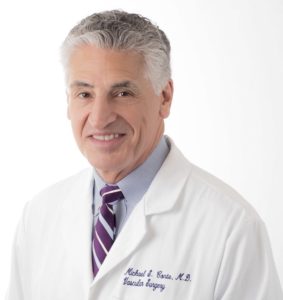
During the 2024 Charing Cross (CX) International Symposium in London, England (April 23–25), a Great Debate that pitted four global peripheral arterial disease (PAD) heavyweights against one another yielded an audience vote that went against the motion, “Bypass surgery is better than endovascular surgery,” by 57% to 43%.
The back-and-forth was set against the backdrop of the results of recent landmark chronic limb-threatening ischemia (CLTI) trials, BEST-CLI and BASIL-2, and immediately after the first-time release of the results from BASIL-3, and included a principal investigator from each: Matthew Menard, MD, of BEST-CLI who argued for the motion, and Andrew Bradbury of BASIL-2, who argued against.
Menard set the tone: “A 33% reduction in MALE [major adverse limb event] or death; 65% reduction in major reinterventions; ongoing reductions in total number of major reinterventions, clinical failure, hemodynamic failure, resolution of index CLTI; better prevention; and better impact in women for surgery,” he said. “Essentially all roads lead to Rome: in this case bypass.”
Bradbury pushed back from the other side of the debate aisle.
“Bypass surgery currently has a very small role—in my opinion—in the management of CLTI,” he argued. “Yes, you can cherry-pick patients with the perfect vein and who are going to live forever, but those are kind of unicorns in our practice here in the UK. I think, realistically, the role of bypass surgery will almost certainly shrink in the years ahead.”
Michael Conte, MD, a BEST-CLI triallist, also making the case for surgery, changed tack slightly, beseeching a change in the motion: “My first disclosure is, of course, I want to change the debate question to a more practical one, which is that bypass surgery is better than endovascular surgery in appropriately selected patients with CLTI because I think that debate question is a bit unrealistic.”
The goal in evidence-based care in PAD is to take a look at the world of coronary artery disease treatment. They have a “robust evidence base based on many clinical trials,” Conte noted. Disease complexity is what defines the advantages of coronary artery bypass grafting (CABG) in certain patients over percutaneous coronary intervention (PCI): “The difference here is based around repeat revascularization,” Conte said. “Heart transplant-free survival is not really what they are measuring,” he added, an allusion to debate around the selection of amputation-free survival as the primary endpoint in BASIL-2.
“You can now put BASIL-3 right next to [BASIL]-1 and 2, which shows absolutely no relative risk to reduction in limb-specific events,” Conte added. “And if you look at the anatomic spectrum of disease, the BEST trial had a broad spectrum of disease and showed a better 30–50% reduction depending on which limb event you look at, including BEST cohort 1, which is limited to infrapopliteal disease.”
Ramon Varcoe, MD, from Sydney, Australia, making the case against the motion, pointed to the now well-circulated Kaplan-Meier curve from the BEST-CLI trial suggesting endovascular intervention is inferior to open surgery. “But if you really drill down into this composite endpoint,” he said, “you can see that this is all driven by major reinterventions, and that’s a big problem.”
Why? he pondered. “Because major reinterventions were highly subjective,” Varcoe continued. “It was completely at the discretion of the operator which patients went on from endo to be converted to an open bypass surgery. With that comes a lot of inherent bias. There was no adjudication by callouts; there were no objective criteria brought to this discussion. Individual surgeons for the most part—three quarters of the operators were surgeons—went on to convert patients at their own discretion.”
Some 15% of patients had a technical failure, he continued. “I would put to you that is not best endovascular care,” Varcoe argued. Two thirds of that number went on to bypass conversion within a 30-day period, which “drove the primary endpoint and made the difference favoring surgery.”












